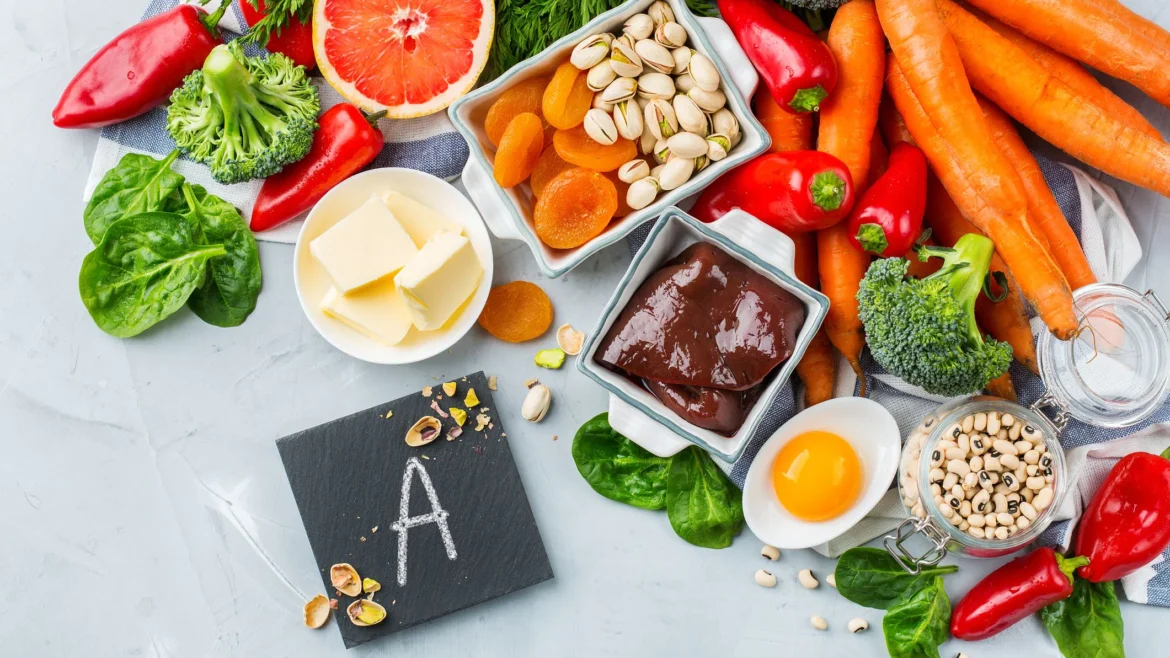Vitamin A is the universal term for gathering fat-dissolvable mixtures profoundly significant for human wellbeing. We can get this nutrient through many resources yet there are some best fruits and vegetables for vitamin A available in market.
They’re fundamental for some cycles in your body, including keeping up the solid vision, guaranteeing the typical capacity of your immune system and organs, and helping the appropriate development and improvement of infants in the belly.
Vitamin A mixtures in animal and plant food varieties come in two distinct structures: provitamin A and preformed vitamin A.
Preformed vitamin A is the dynamic type of nutrient, which your body can utilize similarly, for what it’s worth. It’s present in animal items including meat, chicken, fish, and dairy and incorporates the mixture of retinol, retinal and retinoic corrosive.
Provitamin A carotenoids — alpha-carotene, beta-carotene, and beta-cryptoxanthin — are plants’ dormant types of the vitamin.
These mixtures are changed over to the dynamic structure in your body. For instance, beta-carotene is changed over to retinol (a functioning type of nutrient A) in your small digestive system.
Advantages of consuming vitamin A
Vitamin A has many fluctuated capacities. Retinol not only makes the shades in the eye’s retina as indicated by NLM. On the other hand it is also indispensable for good vision. More particularly night vision and general eye wellbeing.
An age-related eye illness concentrated by the National Eye Institute tracked down that taking significant degrees of cell reinforcements, such as vitamin A, alongside zinc, may lessen the danger of progressing age-related macular degeneration by around 25%. Age-related macular degeneration is the most well-known reason for loss of vision in the more seasoned populace.
Nutrient A additionally assists the skin with developing and fixing it. “This being the circumstances, it is the vigorous fixing in most Retin-A sort items out today,” said Dr. David Greuner, chief and fellow benefactor of NYC Surgical Associates.
Retin-A will be a brand name for tretinoin, a professionally prescribed prescription that treats skin inflammation and other skin conditions. “It works by motioning to the phones to develop at a quicker rate, bringing fresher, more young skin to the surface all the more quickly. In any case, if utilized in overabundance, it very well may be very aggravating.
Sources of vitamin A
There are two sorts of nutrient A. Firstly, preformed nutrient A, likewise called retinol, is found in animal items. Its great sources are fortified milk, eggs, meat, cheddar, liver, halibut fish oil, cream, and kidneys. Secondly, supportive nutrient A is found in plant-based food sources like soil products, as per the U.S. Public Library of Medicine (NLM).
The most widely recognized sort of favorable nutrient An is beta-carotene, a carotenoid that produces dim shades in plant food sources. We can find beta-carotene in these best fruits and vegetables for vitamin A:
- Melon
- Pink grapefruit
- Apricots
- Carrots
- Pumpkin
- Sweet potatoes
- Winter squash
- Broccoli
- Spinach
- Kale
- collard greens
- butternut squash
- lettuce
- red chime peppers
What amount of nutrient A do I require each day?
The suggested regular remittance (RDA) of nutrient A, as set by the National Academy of Sciences (NAS), relies upon your sex. The RDA for nutrient A is 900 micrograms RAE for men and 700 micrograms RAE for ladies.
To simplify life, the Food and Drug Administration (FDA) set the Daily Value (DV) of vitamin A at 900 micrograms (mcg) RAE. You may see the vitamin A DV-covered sustenance names as 5,000 IU (global units). Yet this will change by January 2021 when the new nourishment mark becomes effective.
Rather than centering around the numbers, you can zero in on eating certain nutrition classes to get your nutrient A.
The U.S. Branch of Agriculture (USDA) prescribes eating 4 to 6 cups of red and orange veggies and 1/2 to 2 cups of soft green veggies week after week to hit your objective.
The results of ingesting too much vitamin A.
A lot of vitamin A, also called hypervitaminosis A, is poisonous. As a result, it can harm your liver, where unused nutrient A is put away. It additionally associates with dizziness, sickness, migraines, skin bothering, torment in joints and bones, unconsciousness, and even death.
The furthest reaches of nutrient A you ought to be burning through each day is 3,000 mcg. However, you may likewise encounter negative results by burning through just 1,500 mcg day by day, as per the NAS and the NIH.
It is improbable that you would arrive at this sum by eating nutrient A food varieties. However, you need to be wary about measuring your vitamin A supplements. What amount of time you regularly need and how you require them.
Will nutrient A be unsafe?
Indeed, high admissions of certain types of vitamin A can be unsafe.
Getting an excess of preformed nutrient A can cause wooziness, sickness, cerebral pains, a trance-like state, and even death. It generally happens from supplements or certain drugs. High admissions of preformed vitamin A in pregnant ladies can likewise cause congenital disabilities in their infants. Ladies who may be pregnant ought not to take high dosages of vitamin A supplements.
Devouring high measures of beta-carotene or different types of provitamin A can turn the skin yellow-orange, yet this condition is harmless. However, high admissions of beta-carotene don’t cause congenital disabilities. Moreover, there are other more genuine impacts of getting an excessive amount of preformed vitamin A.
The everyday furthest cutoff points for preformed nutrient A incorporate admissions from all sources—food, drinks, and supplements. Above all, these levels don’t have any significant bearing on individuals taking nutrient A for clinical reasons under the consideration of a specialist. In conclusion, the furthest cutoff points for beta-carotene and different types of provitamin A have not been set up.
